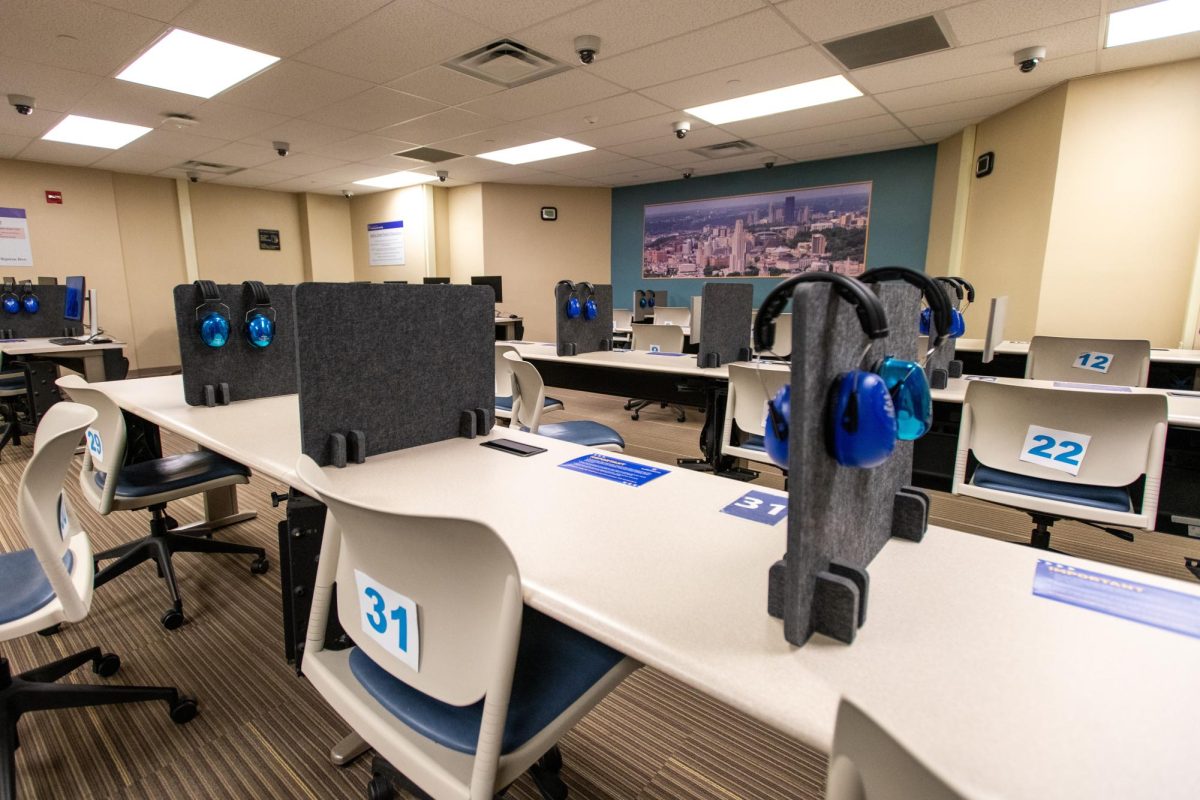Robin Kear, president of Pitt’s faculty assembly, highlighted a 250% increase in Disability Resources and Accommodations since 2000 during the January 10 Faculty Assembly meeting. This increase has left the testing center overwhelmed as its staff try to navigate ways to accommodate everyone.
“One thing that has increased, to the point of over-capacity, is the testing center, where students need accommodations for tests,” Kear said. “At certain times of the year and at certain times of the day, the testing center has many more students than they have the capacity for.”
This volume increase is not exclusive to Pitt. Erik Arroyo, director of academic support services, highlighted how other universities are similarly adapting to accommodate more students.
“What we’re experiencing here at Pitt is common across the higher education industry,” Arroyo said, “The testing center surveyed dozens of peer institutions through our membership in the National College Testing Association. Out of 50 university respondents, 46 reported that they were seeing significant increases in accommodated testing at their universities, too.”
As the testing center navigates through high-use times, their “greatest challenge” is space. According to Arroyo, in the fall 2023 term, the testing center administered 5,000 exams in a room that originally had 42 seats and two private rooms.
“We push the limits of our seating capacity often. During finals, we use three additional classrooms on the ground floor of the Cathedral of Learning for overflow space, hire six all-temps to aid with proctoring, extend hours from 8 a.m. to 8 p.m. daily, add a full Saturday work day, and borrow additional printer/scanner hardware from other areas of the department to manage the volume of that week,” Arroyo said.
The increase in disability services within the past few decades can be attributed to a rise in social “awareness and understanding,” according to Leigh Culley, director of Disability Resources and Services at Pitt. She said when students become more aware of neurodiversity, they can reach out for help more often.
“Psychological conditions are becoming more prevalent among college students, and while students have sought mental health services for years, the pandemic has heightened the severity, complexity, and impact of these conditions,” Culley said.
Katie Fitzpatrick, vice president of Initiatives for Pitt’s Student Government Board, serves as the co-chair for Pitt’s disability ad hoc committee. Their purpose is “to make Pitt a more equitable place on campus,” ranging from physical to academic accommodations, for students with and without disabilities.
“Something that I’ve always advocated for is to ensure that the learning environment is the same for everybody. So having increased accommodations is reflective of that, and they’re definitely trying to make campus more accessible for students. But that also means that more resources need to be put into the testing center and DRS to ensure that they can handle this,” Fitzpatrick said.
The ad hoc committee is currently working to “identify the big, overarching issues that students face on campus” and present them to the university and DRS in hopes of finding solutions, according to Fitzpatrick. She said one of the most important things they are focusing on is classroom accessibility.
“We’re looking at courses that faculty and professors can take to basically learn how to interact with students’ disabilities and learn how to make their classroom accommodating for not even just students that have accommodations, but all students,” Fitzpatrick said. “There’s a lot of students who don’t have accommodations, who should have accommodations — they just don’t know how to go about getting them,” Fitzpatrick said.
Arroyo said faculty can support the increased demands for accommodated testing in “a couple of ways,” such as universal design, alternative assessments and flexible testing times.
“By permitting students to test before or after the classroom examination, the testing center can de-densify the seating area and create a more even distribution of testing throughout the day,” Arroyo said. “This decreases congestion at registration, increases space in between test-takers and supports the effort to create a distraction-free environment.”
As someone who has used testing accommodations, Fitzpatrick said she has “definitely noticed” the increase in testing center use among students. To manage this, she advises students to “just schedule everything at the beginning of the semester” to ensure they get a testing time.
“On a personal level, I’ve even had professors say to me that you need to schedule out weeks in advance, because the testing center just can’t handle the current amount of people that need to use it,” Fitzpatrick said.
Both Arroyo and Fitzpatrick think that it’s important to increase the spaces available for students in the long-term. Arroyo said that the testing center is investigating automated registration via Panther Card rather than manual sign-ins, software enhancements, and most importantly, new spaces.
“The need for a testing center will never completely go away,” Kear said, “but Pitt is looking at different ways to alleviate the stress on the testing center. We’re going to be working with the Senate Educational Policies Committee to talk more about the solutions, so that all students can be accommodated.”
A previous version of this story noted that the testing center administered 1515 exams. This is only the number of exams during finals week. The center administered nearly 5,000 exams in fall 2023. The article has been updated to reflect this change. The Pitt News regrets this error.



